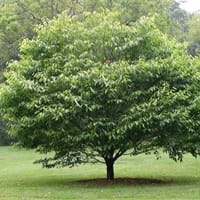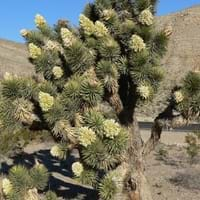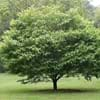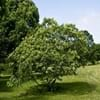Life Span
Perennial
Perennial
Type
Tree
Cactus or Succulent, Tree
Origin
North America, United States, Northeastern United States, Mid-Atlantic United States, Southeastern United States, Central United States, South-Central United States, Texas, Mexico, Europe
Southwestern United States, Mexico
Types
Carpinus caroliniana caroliniana, Carpinus caroliniana virginiana
Not Available
Number of Varieties
Not Available
Habitat
Not Available
Desert, Dry areas, Rocky areas, Sandy areas
USDA Hardiness Zone
3-9
6-10
Sunset Zone
1a, 1b, 2a, 2b, 3a, 3b, 4, 5, 6, 7, 8, 9, 14, 15, 16, 17
9, 10, 11, 12, 13, 14, 15, 16, 18, 19, 20, 21, 22, 23
Habit
Spreading
Upright/Erect
Flower Color
Yellow, Yellow green
White, Ivory
Flower Color Modifier
Bicolor
Not Available
Fruit Color
Brown
Light Green
Leaf Color in Spring
Green, Light Green
Gray Green, Dark Green
Leaf Color in Summer
Dark Green
Gray Green, Dark Green
Leaf Color in Fall
Yellow, Yellow green, Orange Red
Gray Green, Dark Green
Leaf Color in Winter
Not Available
Olive, Gray Green, Dark Green
Leaf Shape
Pinnate
Linear
Plant Season
Summer, Fall
Spring, Summer, Fall, Winter
Sunlight
Full Sun, Partial Sun, Partial shade, Full Shade
Full Sun
Growth Rate
Slow
Very Slow
Type of Soil
Clay, Loam
Loam, Sand
The pH of Soil
Acidic, Neutral
Acidic, Neutral, Alkaline
Soil Drainage
Average
Well drained
Bloom Time
Spring
Early Spring, Spring, Late Winter
Tolerances
Wet Site
Drought
Where to Plant?
Ground
Ground
How to Plant?
Not Available
Leaf Cutting, Stem Cutting
Plant Maintenance
Medium
Medium
Watering Requirements
Requires regular watering
Allow soil to be completely dry in between waterings, Do not water frequently
In Summer
Lots of watering
Lots of watering
In Spring
Moderate
Moderate
In Winter
Average Water
Average Water
Soil pH
Acidic, Neutral
Acidic, Neutral, Alkaline
Soil Type
Clay, Loam
Loam, Sand
Soil Drainage Capacity
Average
Well drained
Sun Exposure
Full Sun, Partial Sun, Partial shade, Full Shade
Full Sun
Pruning
Requires very little pruning
Remove damaged leaves, Remove dead branches, Remove dead leaves
Fertilizers
All-Purpose Liquid Fertilizer
All-Purpose Liquid Fertilizer, No fertilizers needed
Pests and Diseases
Canker, fungus
Brown Spots, Red blotch
Plant Tolerance
Wet Site
Drought, Dry Conditions, Dry soil, Heat Tolerance, Rocky Soil, Sun
Flower Petal Number
Not Available
Single
Fragrant Leaf
Not Available
No
Foliage Texture
Medium
Bold
Foliage Sheen
Glossy
Matte
Attracts
Not Available
Not Available
Allergy
Not Available
Not Available
Aesthetic Uses
Showy Purposes, small hedge
Decorating walls
Beauty Benefits
Good for the Scalp, Stops hair loss
Not Available
Environmental Uses
Air purification
Air purification
Medicinal Uses
Anxiety, Bleeding, Cold, Cough, Cuts, Eye Infection, Fatigue, Fights Depression, Insomnia, Menstrual Disorders, Wounds
Not Available
Part of Plant Used
Whole plant
Not Available
Other Uses
Used as firewood, Used as Ornamental plant, Used for its medicinal properties, Used for woodware
Not Available
Used As Indoor Plant
No
No
Used As Outdoor Plant
Yes
Yes
Garden Design
Hedges, Screening / Wind Break, Shade Trees, Street Trees
Feature Plant, Rock Garden, Wall
Botanical Name
CARPINUS caroliniana
YUCCA brevifolia
Common Name
American Hornbeam, Musclewood, blue-beech, Ironwood
yucca palm
tree yucca
palm tree yucca
In Hindi
अमेरिकी हानबीन
Joshua Tree
In German
Amerikanische Hainbuche
Joshua Tree
In French
Charme de Caroline
Joshua Tree
In Spanish
Carpinus caroliniana
Árbol de Joshua
In Greek
american γαύρο
Joshua Tree
In Portuguese
Carpinus caroliniana
Joshua Tree
In Polish
Grab amerykański
Joshua Tree
In Latin
american hornbeam
Joshua ligno
Phylum
Magnoliophyta
Tracheophyta
Class
Magnoliopsida
Magnoliopsida
Order
Fagales
Asparagales
Family
Betulaceae
Agavaceae
Clade
Angiosperms, Eudicots, Rosids
Angiosperms, Monocots
Tribe
Not Available
Not Available
Subfamily
Not Available
Not Available
Importance of American Hornbeam and Joshua Tree
Want to have the most appropriate plant for your garden? You might want to know the importance of American Hornbeam and Joshua Tree. Basically, these two plants vary in many aspects. Compare American Hornbeam and Joshua Tree as they differ in many characteristics such as their life, care, benefits, facts, etc. Every gardener must at least have the slightest clue about the plants he wants to plant in his garden. Compare their benefits, which differ in many ways like facts and uses. The medicinal use of American Hornbeam is Anxiety, Bleeding, Cold, Cough, Cuts, Eye Infection, Fatigue, Fights Depression, Insomnia, Menstrual Disorders and Wounds whereas of Joshua Tree is Not Available. American Hornbeam has beauty benefits as follows: Good for the Scalp and Stops hair loss while Joshua Tree has beauty benefits as follows: Good for the Scalp and Stops hair loss.
Compare Facts of American Hornbeam vs Joshua Tree
How to choose the best garden plant for your garden depending upon its facts? Here garden plant comparison will help you to solve this query. Compare the facts of American Hornbeam vs Joshua Tree and know which one to choose. As garden plants have benefits and other uses, allergy is also a major drawback of plants for some people. Allergic reactions of American Hornbeam are Not Available whereas of Joshua Tree have Not Available respectively. Having a fruit bearing plant in your garden can be a plus point of your garden. American Hornbeam has no showy fruits and Joshua Tree has showy fruits. Also American Hornbeam is flowering and Joshua Tree is not flowering . You can compare American Hornbeam and Joshua Tree facts and facts of other plants too.





